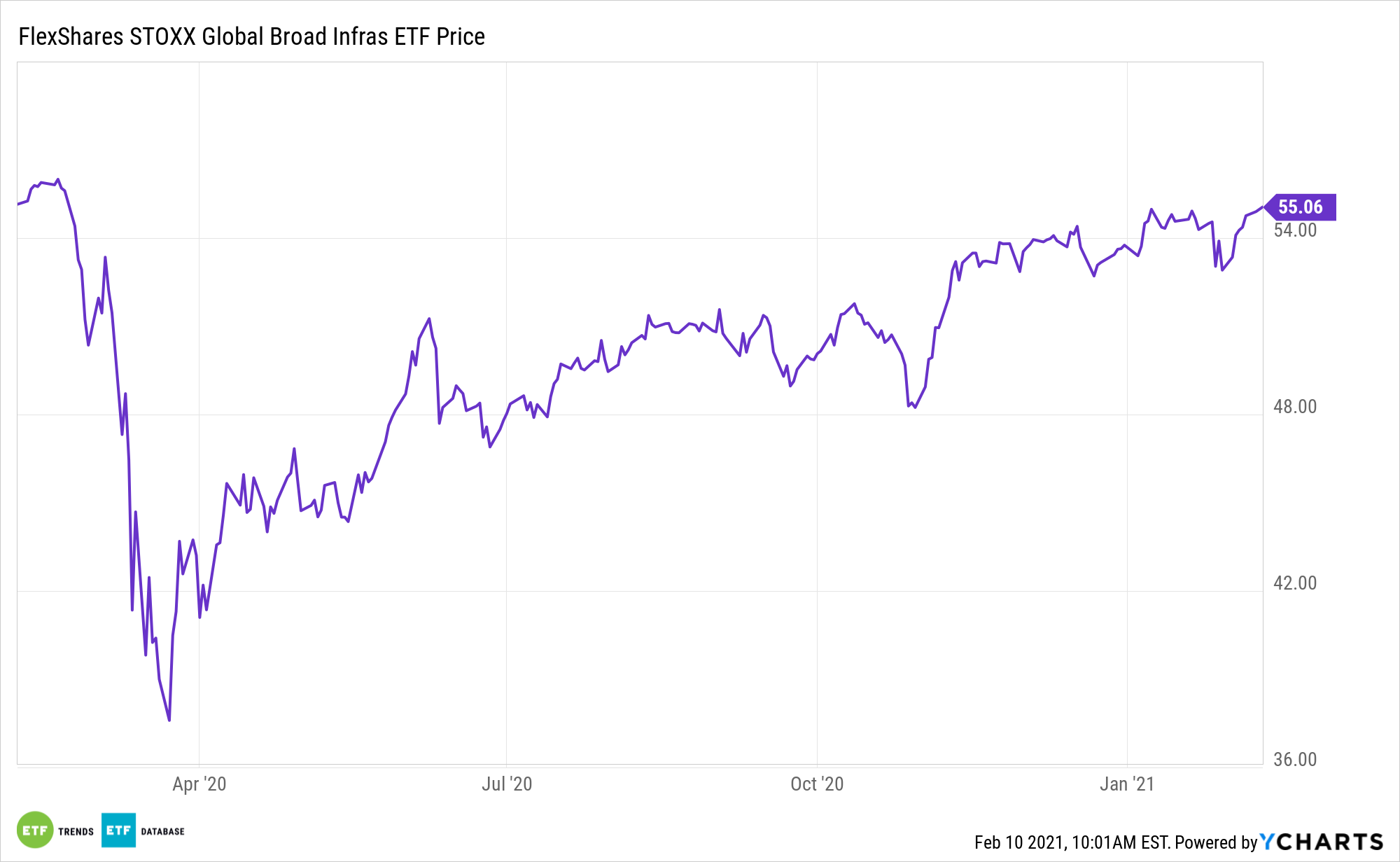Plenty of asset classes took hits last year at the hands of the coronavirus pandemic, including listed infrastructure. However, the FlexShares STOXX Global Broad Infrastructure Index Fund (NYSEArca: NFRA) is no worse for the wear and remains a valid income-generating idea in 2021.
NFRA tries to reflect the performance of the STOXX Global Broad Infrastructure Index, which identifies equities that derive the majority of revenue from infrastructure business, providing exposure to both traditional and non-traditional infrastructure sectors. Investors considering NFRA or any other infrastructure asset are betting this time will be different when it comes to policy execution under Biden.
What makes NFRA compelling relative to rival infrastructure ETFs is index choice and methodology.
“When it comes to global listed infrastructure, there are two types of indices: legacy and contemporary,” according to FlexShares research. “Legacy indices use a top-down approach to identify infrastructure companies using GICS sector classification codes, while contemporary indices leverage advancements in data availability and application to implement a bottom-up approach. Applying this data allows investment managers to tie company revenues to the specific infrastructure-related assets that the company owns.”
Unpacking the NFRA Thesis
NFRA’s index focuses on long-lived assets in industries with very high barriers to entry, with at least 50% of their revenue from key sectors with a 3-month average daily trending volume of at least $1 million. The portfolio is weighted based on a free-float market cap with certain constraints to limit exposure in any one security, sub-sector, or country. The fund is rebalanced annually.

The infrastructure category has historically offered higher dividend yields than global fixed income and equities, along with greater predictability of long-term cash flows. NFRA may be able to capture the growing demands of economic development that are driving more funding into transport, power, and other systems.
“Amidst the market turmoil of 2020, investors’ reasons for allocating to global listed infrastructure held steady. Investors continue to be attracted to infrastructure due to its potential for portfolio diversification, stable cash flows, and a long-term inflation hedge,” notes FlexShares. “Looking ahead, the case for infrastructure could perhaps be strengthened by the COVID-19 pandemic. Widespread quarantines have given rise to a greater need for connectivity, which could be a boost for telecommunications companies classified as infrastructure under contemporary index methodology. And as companies start to reassess their supply chain vulnerability to pandemic risks, infrastructure investment may increase. Further, infrastructure could be poised for direct fiscal stimulus as governments shape policy to support economic recovery.”
For more on multi-asset strategies, visit our Multi-Asset Channel.
The opinions and forecasts expressed herein are solely those of Tom Lydon, and may not actually come to pass. Information on this site should not be used or construed as an offer to sell, a solicitation of an offer to buy, or a recommendation for any product.

